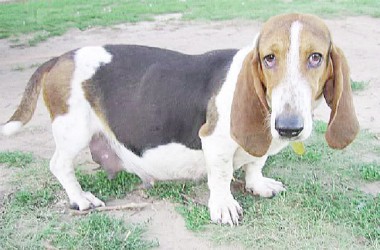Also, you should choose the area in which you would wish the bitch to give birth long before the actual day of parturition. The actual location should be draft free, and well covered and protected from the elements. That’s why, if possible, she should be allocated a small room in the home. Finally, the whelping area should be in a quiet part of the home or yard. Of course, one can use the kennel, which she knows and has become accustomed to. The important thing is that the whelping area should be a quiet area and not one which is a thoroughfare with a lot of noise and human or animal traffic.

Anyway, back to the preparations for whelping. There are those who argue that the best place for a bitch to deliver her puppies is in a ‘whelping box.’ Basically, it is a simple box measuring four feet by five feet for large dogs (German Shepherds, Rottweilers, etc) and two feet by three feet for the toy breeds. Given those dimensions, common sense will dictate the size of the box for medium-sized dogs. Also, the walls of the box should be so high as to stop the young pups from crawling out, while low enough to allow the mother easy ingress and egress. Indeed, in the dog-loving First World, there are special commercially available whelping boxes with washable pads and linings.
If you don’t construct a whelping box, the area which you have determined to be the whelping area should be furnished with old towels, clothes and/or newspapers which the expecting mother can use to build her own ‘nest.’ One can also use mattress pads, carpeting, or any other types of material which ensure good surface traction and are disposable or washable. Please note, however, that newborn puppies should not have to exist in deep loose bedding (such as straw, grass, hay, sawdust, etc) which can be inhaled or which in any way can obstruct their breathing.

So, how do we know when the dam (mother dog) is ready to give birth (whelp)? Well, she could exhibit some or all of the signs listed below.
There is a drop in the bitch’s (dam’s) body temperature to about 980F/370C (normal is about 990F-1010F). Well, that will go unnoticed, if you are not taking the dog’s temperature on a daily basis at the end of her pregnancy, as she is leading up to delivery. So, perhaps a week before her expected parturition (56-61 days after conception) you may begin taking her temperature and write down the readings.
Restlessness as if she is uncomfortable in any position. While she is being fidgety, you may notice that she is looking at you with doleful (dare I use that descriptive work) eyes, as if she is expecting you to somehow solve her problems. (I know I am ‘anthropomorphizing’ the dog, and giving her human characteristics, but I am prepared to argue this issue any time. Any canine caregiver will know exactly what I am talking about.)
Some bitches begin to vomit (throw up) during the last week of pregnancy.
During pregnancy and especially during the final week, she will urinate more often (the bag of puppies are pressing against her bladder); and she may show signs of straining to defecate.
Loss of appetite
Often, just a day or two before delivery (parturition) the bitch may discharge some mucus (slime) from her swollen vulva (the entrance to the vagina).
We’ll continue with the other stages of labour next week.
Please implement disease preventative measures (vaccinations, routine dewormings, monthly anti-heartworm medication, etc) and adopt-a-pet from the GSPCA’s Animal Clinic and Shelter at Robb Street and Orange Walk, if you have the wherewithal to care well for the animals. Do not stray your unwanted pets, take them to the GSPCA’s Clinic and Shelter instead. If you do not wish your pet to have puppies or kittens, you may exploit the GSPCA’s free spay and neutering programme. If you see anyone being cruel to an animal, or if you need any technical information, please get in touch with the Clinic and Shelter by calling 226-4237.




